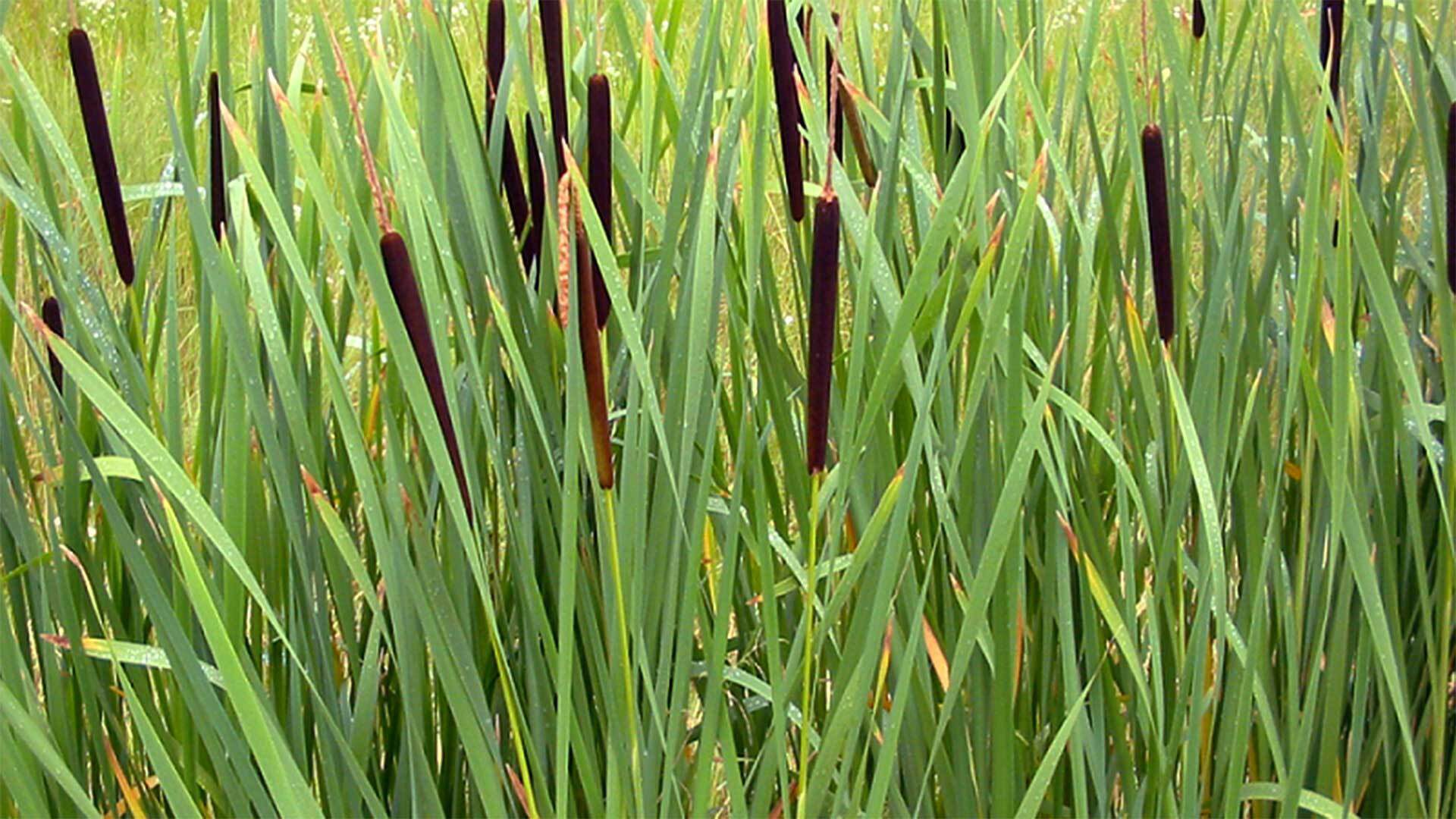- March 01, 2021
- By Samantha Watters
An invasive weed that chokes African farm fields and blocks waterways—and as a result is generally chopped down and left to rot—may have a new and beneficial second act, thanks to a UMD research project.
Animal and avian sciences Professor Richard Kohn and research partners have been collaborating for the last three years with residents of Nigeria’s Hadejia Valley to find uses for Typha—also known as cattails or reeds—a tall wetland plant that can crowd out other species.
“Typha is a major problem in Africa,” said Kohn. “It grows very aggressively where there is over fertilization.”
 The researchers and residents hit upon a number of elegant ways to turn what’s normally a nuisance into an asset and a sustainable solution to two problems—the health and deforestation issues resulting from the use of firewood as the main cooking fuel, and the lack of animal feed options during the dry season.
The researchers and residents hit upon a number of elegant ways to turn what’s normally a nuisance into an asset and a sustainable solution to two problems—the health and deforestation issues resulting from the use of firewood as the main cooking fuel, and the lack of animal feed options during the dry season.
With funding from the World Bank, Kohn and his collaborators from the Federal University of Gashua in Nigeria, Polytechnic University of Madrid and Nigeria’s National Agricultural Extension and Federal Ministry of Water Resources worked on ways to convert the weed into biogas—gases produced when organic matter breaks down—for a clean cooking fuel, and animal feed for local livestock.
Not only does cooking with firewood consume struggling forests, it contributes to an estimated 95,000 deaths related to smoke inhalation in that region of Africa, Kohn said. Meanwhile, when livestock grow hungry and thin during the dry season, it can be hard to keep them out of farm fields leading to conflicts between farmers and herders.
“We thought maybe we could help solve both of these problems and make the Typha useful,” Kohn said.
But doing it wasn’t as easy as saying it. The necessary drying process was particularly difficult, since the plant is 80% to 90% water. If you cut it and let it dry like hay, it decomposes before it is usable. But they found that if you cut it longitudinally, the plant dries quickly and can then be put to use.
The researchers also analyzed different stages of Typha maturity to see when it is best cut and used for biogas or animal feed. They discovered that the immature plant is good animal feed that can improve animal health and performance, while it can be used to produce biogas at both immature and mature stages.
The next hurdle, Kohn says, is the maintenance of the systems used to digest the Typha and collect methane for cooking fuel.
“Building family-sized and commercial units has been a success, and we have seen support for the process as these systems are built and implemented,” said Kohn. “But where often these systems break down is when it comes time to clean them out and maintain them. That is what remains to be seen, but we are hopeful given the economic opportunities that it will continue to take off.”
The economic opportunities that come from processing the plant are particularly promising for the women in the region, many of whom are forbidden by their culture from working outside the home.
“For women especially … they identified this as a business opportunity for them specifically,” said Eva Iglesias of the Polytechnic University of Madrid. “Many of the women have goats that are often their main source of income, so it gives them an opportunity to feed their goats and is a good strategy to help close the gap and empower women.”
Kohn and collaborators are all looking forward to the benefits this work can bring to the region, across Nigeria and potentially beyond into other countries as a model for dealing with invasive plant species.
“It can also apply to other projects in other countries as invasive weeds grow dramatically across Africa and around the world,” said Fernando Escribano, project coordinator with the Polytechnic University of Madrid. “We hope that there will be great opportunities for entrepreneurship in the area coming from our work.”
Topics
Research